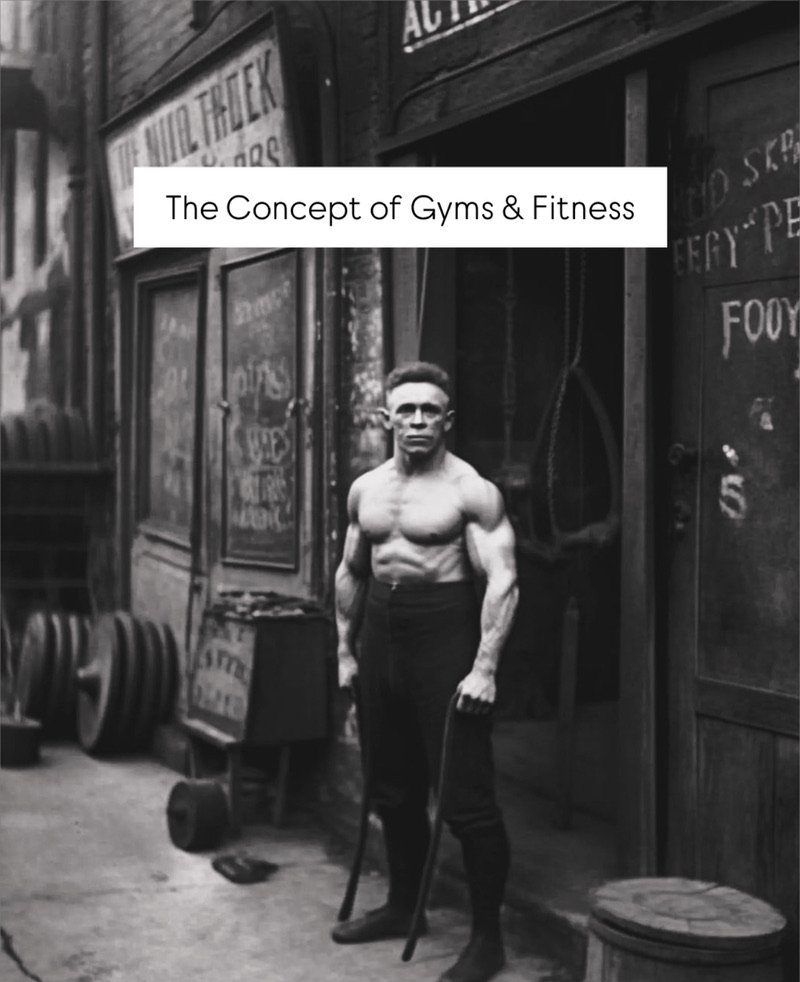Gym’s | A long and interesting history
The concept of a "gym" has a long and interesting history, with its roots going back to ancient civilisations. However, the gym as we know it today truly began to take shape during the 19th century, when physical fitness gained popularity as a societal ideal.
In the Victorian era, physical fitness was linked to character development. The Victorian man was encouraged to cultivate not only his mind but also his body. Gymnasiums became spaces where men could engage in activities like weightlifting, callisthenics, and gymnastics, building not just physical strength but also discipline and resilience. This was especially true during the Industrial Revolution, when the transition from manual labour to more sedentary jobs meant that people needed alternative ways to stay fit. 19th-century gyms were quite different from what we might expect today. Victorian-era gyms focused more on bodyweight exercises, free weights, and rudimentary machines designed to improve strength and agility. This was also the era when the dumbbell became a popular fitness tool. Interestingly, this time period also witnessed the rise of the physical culture movement. This movement emphasised the importance of a balanced lifestyle, combining regular exercise, healthy eating, and mental discipline. Figures like Eugen Sandow, often referred to as the "father of modern bodybuilding," became famous for promoting physical culture. Sandow, along with other fitness pioneers, advocated for the idea that strength training was not just for professional athletes or the military but for every man who sought to improve his health and moral fiber. Gyms during this period were often exclusive to men. Physical fitness was seen as a masculine pursuit, with men expected to embody strength, endurance, and control. Women's participation in fitness was largely limited, although by the late 1800s, some women began to challenge these norms and engage in their own forms of exercise, albeit in separate spaces.
The Victorian gym was also a social space. In an age when public health was becoming a major concern, physical fitness was promoted as a way to combat illness and ensure a robust, healthy population. Men would gather in gyms not just to train but also to discuss ideas, network, and form bonds.
During this era, gym attire was markedly different from what we see today. Men in the 19th century often worked out in woollen shirts, trousers, and even shoes. This formal style of dress might seem strange to us now, but it reflected the societal expectation that a gentleman should always present himself with dignity and decorum, even while exercising.
The connection between fitness and social status was also significant. For many upper-class Victorian men, going to the gym was a way to signal their wealth and commitment to self-improvement. It was a space where they could demonstrate their dedication to both their physical and moral development, setting them apart from the lower classes, who often didn't have the time or resources to engage in regular exercise.
It's fascinating to think about how much the culture of fitness has changed since then. In the late 19th and early 20th centuries, men who worked out in gyms were considered part of an elite group—individuals who took their health and moral duty seriously. What was once a space of exclusivity and discipline has become a more inclusive part of everyday life. By the early 20th century, the development of organised sports and the rise of Olympic competitions also began to influence gym culture.
This image offers us a unique glimpse into how people of the late 1800s and early 1900s approached physical exercise. Back then, gyms were not only places to build muscle but also centres of moral and intellectual improvement, reflecting the societal values of the time.
As athletics became more competitive, the training methods used in gyms evolved, becoming more specialised and scientific. Fitness was no longer just about moral or intellectual improvement; it was also about physical performance and competition.
The gymnasium movement that began in Europe in the early 19th century had spread across the Atlantic to America by this time. Figures like Dr. John Harvey Kellogg and Bernarr Macfadden were instrumental in promoting physical fitness in the United States, advocating for gym-based exercise as a way to prevent disease and improve the nation’s health. Kellogg, better known today for his cereal empire, was a key proponent of regular exercise and good nutrition, which he believed were essential for maintaining a healthy body and mind. Early gyms were often simple, utilitarian spaces with little decoration, as the focus was on physical improvement rather than aesthetic appeal.
Today, gyms are often elaborate, with state-of-the-art equipment, modern lighting, and even specialised workout rooms. This reflects broader changes in how we approach fitness—no longer just as a moral duty but as an enjoyable and social activity. Looking at this old photograph, it's easy to imagine the camaraderie and focus of these men as they worked on their physical fitness. While the equipment and attire may seem outdated by today's standards, their dedication to improving their health and strength remains as relevant as ever.
The photograph above captures a moment in time when fitness was becoming an important part of everyday life, laying the groundwork for the modern fitness industry we know today. Ultimately, old photos like these remind us of how far we've come in our understanding of health, fitness, and the body.
What was once considered a rigid and exclusive practice has become a widespread and dynamic industry, open to anyone willing to improve their health and wellbeing.

